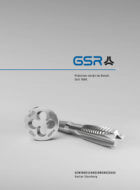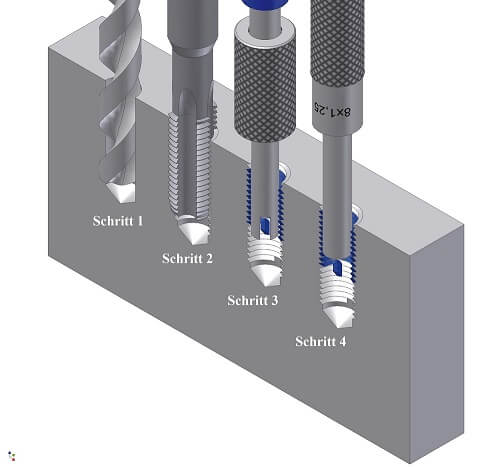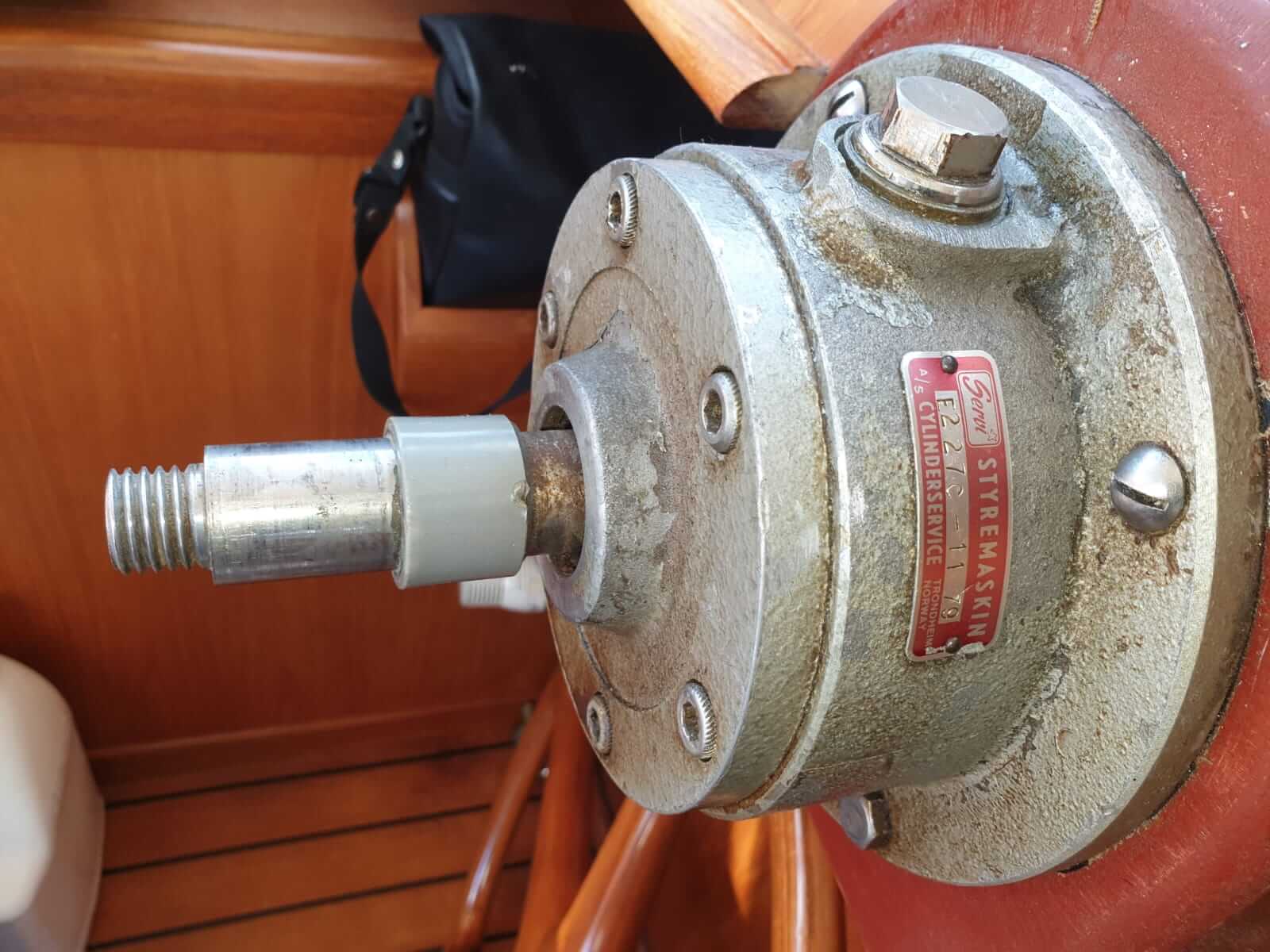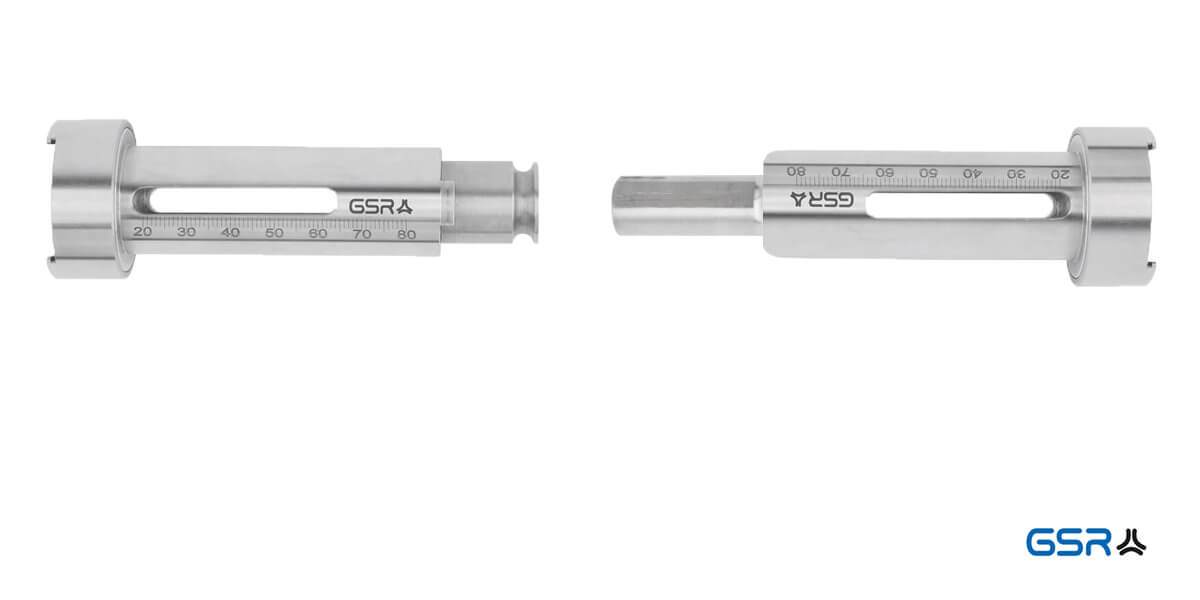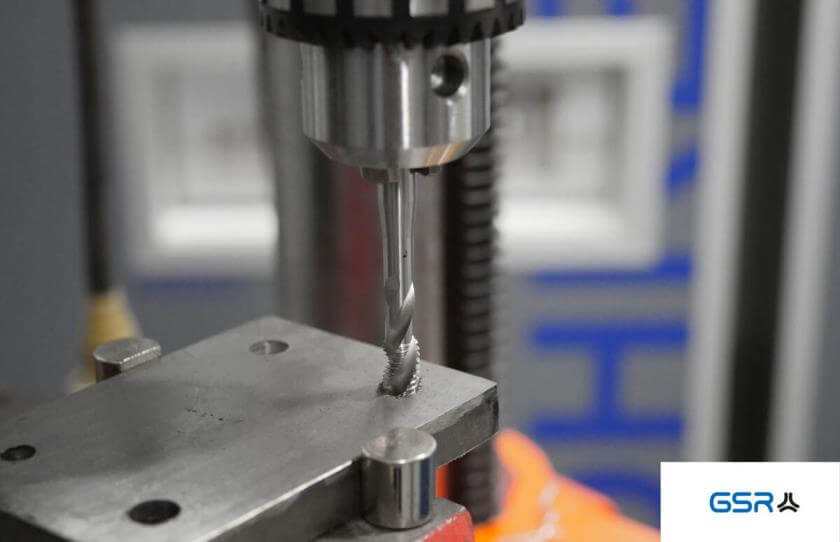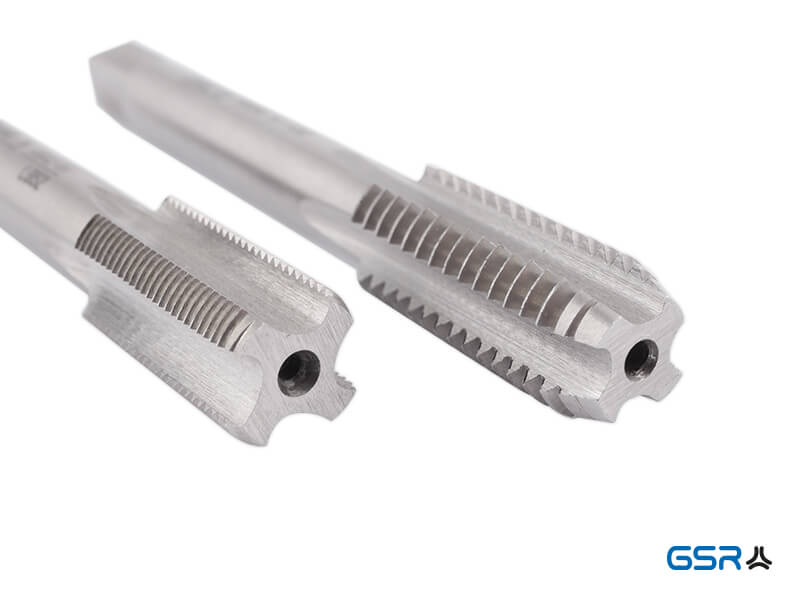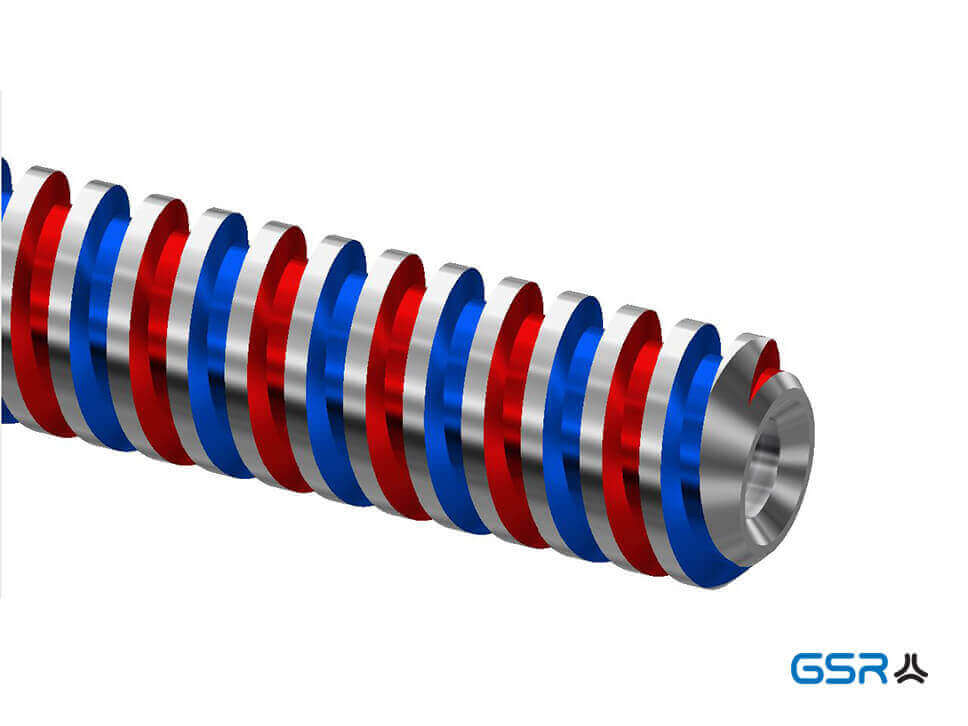Thread file: Clean and rework threads with the thread file
In this blog post we would like to introduce the somewhat unknown “thread file” to you.

Overview picture: metric thread file (silver) and inch thread file (black)
What is a thread file used for?
With a thread file, damaged external and internal threads can be reworked manually. But not only that. The thread file is also used to file off dirt and adhesions on the threads of foreign materials.
What is a thread file?
The thread file is made of extra-hardened tool steel and is particularly suitable for use against soft materials such as lead, zinc, brass and even unhardened steel.
Thread files are normally milled and have a square shank. There is space for 8 different thread pitches on the tool. At the two ends of the thread file there are gauges (similar to thread templates) on which you can measure the thread if you do not know the size.
As you can see in the picture below, there are rows of teeth on the thread file which are suitable for the corresponding thread pitches and thread pitches.

Thread file in use on tap
The thread files are available in both metric (ISO) and imperial thread versions.
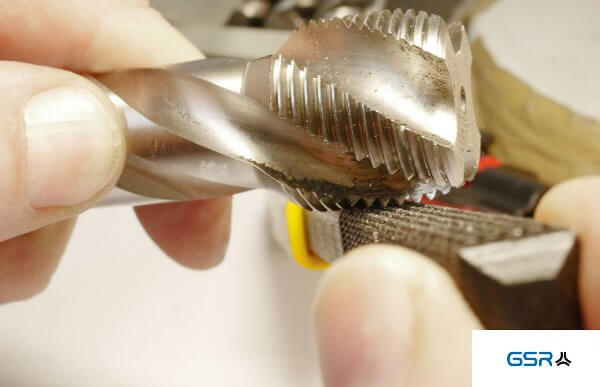
hread file on tap (example of use).
Using the thread file
A thread file can be used in many ways. The two main tasks of a thread file are:
- Cleaning of threads (filing off foreign materials)
- Post-processing of threads (for example: correction and repair of bolts and shafts)
In some cases, an alternative to the thread file would be to recut the thread. However, additional material would be removed during thread cutting. However, this is not always directly necessary.
Metric and inch thread file
- For metric threads with the pitches
0.8- 1 – 1.25 – 1.5 – 1.75 – 2 – 2.5 – 3 mm (ISO - For inch threads with the pitches:
24 – 20 – 18 – 16 – 14 – 12 – 11 – 10 turns/inch (Whitworth)
The thread file in the application
In this example we want to give you a step-by-step instruction for the thread file. In our example you see a tap with material deposits in the thread grooves. The foreign material here has “caked” onto the base material by friction and then built up further. This process is also called seizing.

Clamped foreign material on a tap
Step-by-step instructions
1. Get everything you need ready:
- You need the thread you want to machine. In our case a tap.
- A thread file (choose between metric and imperial).
- A vice to clamp and machine the workpiece securely and firmly.
2. Determine the thread of the workpiece:
- What type of thread is it (metric or imperial)?
- Then determine the pitch or threads. Note: You can create both ends of the file like a thread template to determine the pitch. If necessary, you can also use a thread template to determine the pitch.
3. Treat the thread with the thread file:
- Clamp the workpiece firmly in the vice and apply the thread file appropriately. Now try to file off the foreign material by moving the thread file slightly back and forth. The aim is to completely loosen the adhesions in the threads with the file.
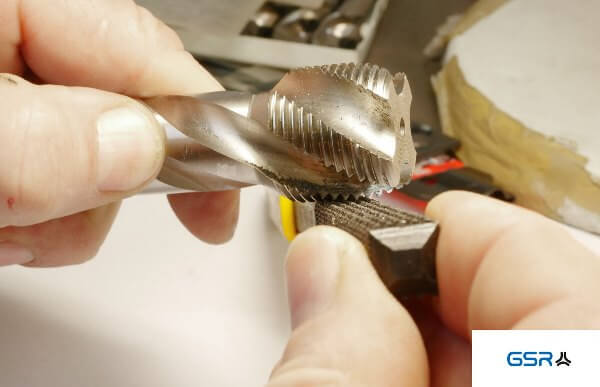
Application of the thread file: by moving the thread file slightly back and forth, file off the stuck foreign material
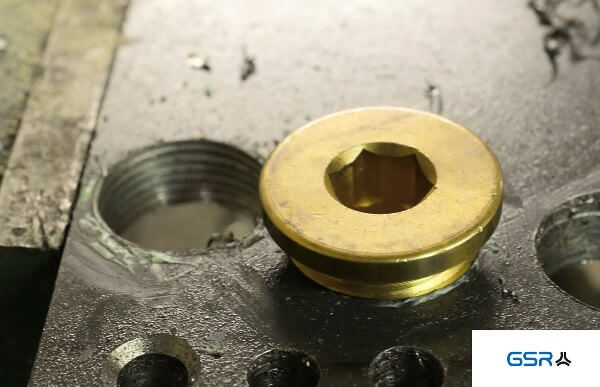
After filing with the thread file: Screw the plug into the clean thread for testing
Did you like the article? Do you have questions or feedback? Please write to us.
Thread files are available from us on request!





